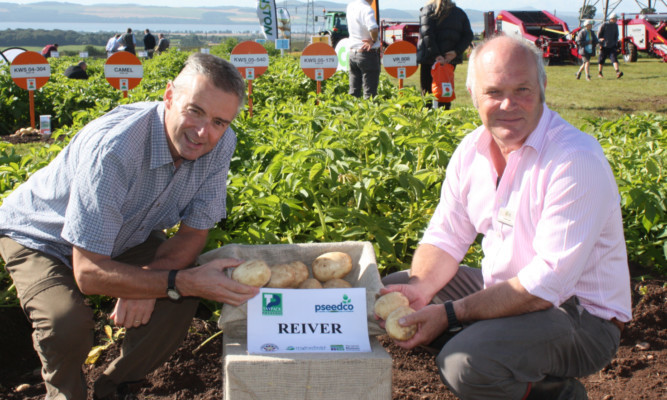This year’s Potatoes In Practice event at the James Hutton Institute’s Balruddery Farm was hailed as the biggest and best ever but behind the trade stands, the trial plots and the magnificent views over the Tay, there were problems to be addressed.
One, of course, is the drop in fresh potato consumption but another more insidious one is the relentless march of potato cyst nematode (PCN) across some of Scotland’s best growing land.
The pallida species of the pest is proving to be very difficult to control partly thanks to closer rotations.
Breeding new varieties with resistance to the soil-borne pest is a “tough ask” according to Finlay Dale, lead potato breeder at JHI.
Part of the problem he believes lies with the supermarkets and their “full emphasis” on perfect skin finish.
The variety Vales Everest, which has good partial resistance to pallida had and continues to have some commercial success but it doesn’t meet all of the 101 factors needed for a perfect variety, especially skin finish.
It is a great pity that skin finish is seen as so important because all it gives us is the most attractive compost heaps in Europe. “They are full of beautiful peelings,” Dr Dale said.
The demand for perfect skins puts a “huge burden” on breeders but at least there is a much improved toolbox to draw on.
Dr Dale’s colleague, Dr Glenn Bryan, leads the potato genetics team at JHI and he explained the rapid advances made since the mapping of the potato genome.
Initially 300 genetic markers were identified. Now the figure is nearer 10,000 and could soon reach 50,000. Eventually there may be 400,000 markers available and this will undoubtedly help in areas such as tuber shape and dormancy where there are gaps in the available knowledge.
The pallida species of PCN is proving much harder to beat than its cousin rostochiensis.
Resistant varieties, primarily Maris Piper, have helped reduce rostochiensis populations for 45 years without any breakdown in resistance but this is unlikely to happen with pallida.
Dr Bryan said: “We have pallida resistant varieties such as Mistay and Reiver on display here today but we will need to be careful not to rely on the same resistance year-in-year-out.
“There is a huge variation in pallida and even now growers are inadvertently selecting for late hatching.
“Applying nematicides controls the early hatching nematodes but by the time those that hatch later produce eggs the chemical has run out of steam.”
The later types then become dominant.
Professor Ian Toth, also of JHI, pointed to the advantages of integrated pest and disease management where a range of measures had proved more effective than relying purely on plant resistance or chemicals.
The same approach would have to be adopted with slugs. They were an ever-present risk according to SAC Consulting arable specialist Dr Andy Evans.
“Methiocarb has been the most commonly used product but is being withdrawn and cannot be used after September 2015. This is a big blow. Metaldehyde pellets are an alternative but there is a risk to water quality, “ he said.
The best approach he believed would be for growers to monitor slug populations more carefully and to reduce the population whenever appropriate.
For example pellets could be spread in the autumn on the previous stubble to control a slug population before it had a chance to multiply.
Glyphosate, sprayed either pre or post-harvest on cereal crops. could reduce the supply of greenery for slugs to graze on but, if winter cover crops become part of the CAP greening requirement, the over-wintering slug position could become much worse.
The suggestion that wider crop rotations would help met universal approval with all the scientists and advisers present at an early morning press briefing.
The enthusiastic nodding of heads indicated that this would over time help to solve many problems. The answer would appear to be partly in growers’ hands.
